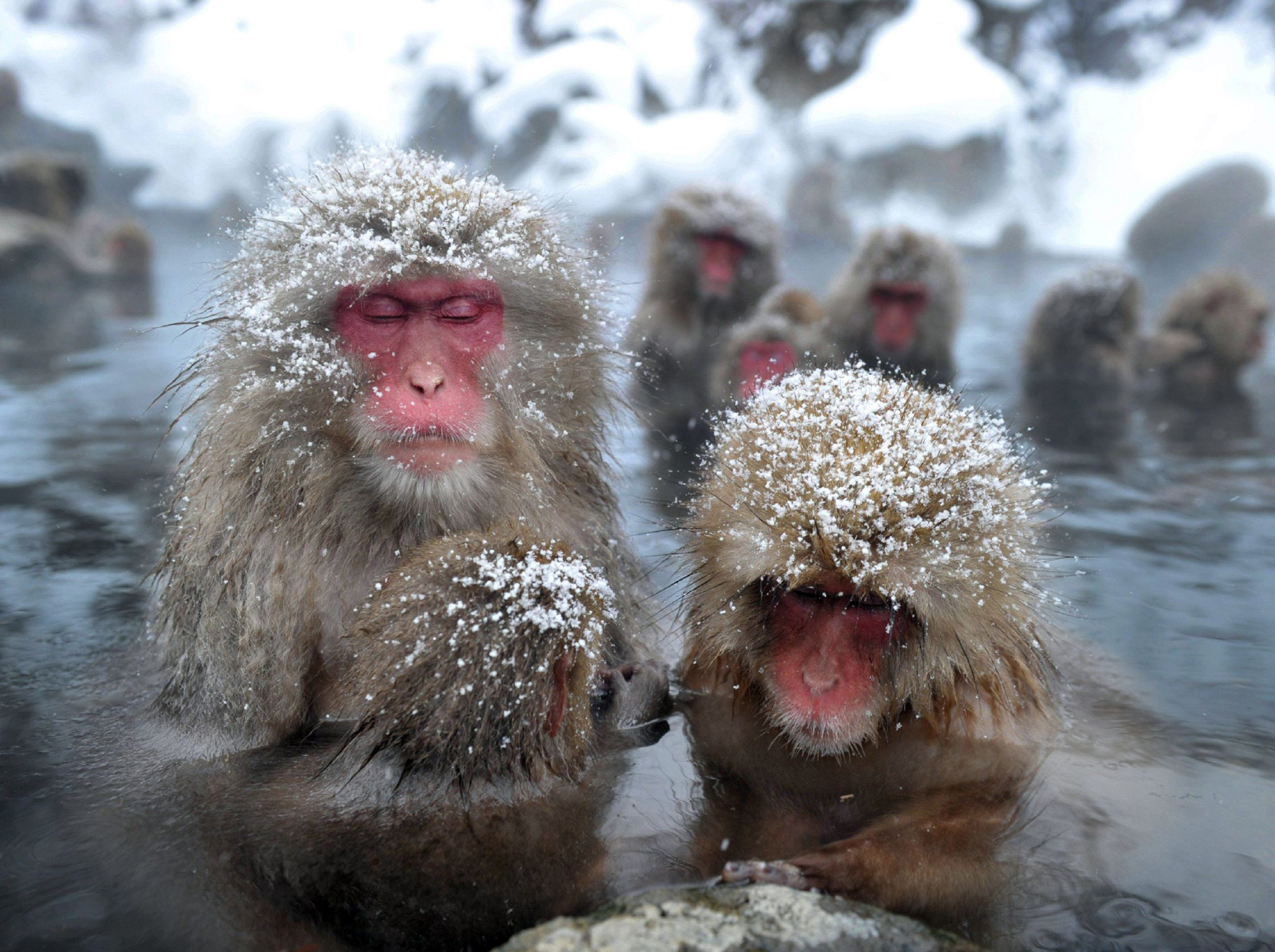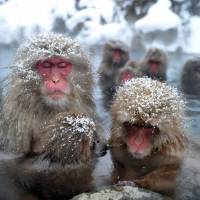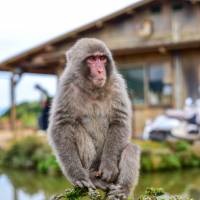In 1980, when I came to live here in Kurohime in the hills of northern Nagano Prefecture, we had neither deer, wild boar nor monkeys in this area because — so the locals said — there was too much snow in winter for them to find enough food to survive.
Well, perhaps there's a bit less snow these days due to climate change, because Sika deer (nihonjika in Japanese) and wild boar (inoshishi) started to move in about 15 years ago, and now they are regular visitors to our 42-hectare Afan Woodland Trust, to the adjoining 27-hectare national forest we manage, and to surrounding farmland.
Even though the internationally famous "snow monkeys" of Jigokudani (Hell's Valley) are to be found only about an hour's drive to the south near the town of Yamanouchi, until about 10 years ago none of them frequented our region.
Then I began to hear reports of sightings on Mount Kurohime, although always of solitary lone males. Before long, though, a young male was spotted just a couple of hundred meters from my house.
Last autumn, a friend even had his garden close to the Kurohime ski slopes raided by a whole troop of males, females and youngsters. They'd dug up more than half his potato crop before his wife realized and shouted at them from the balcony, and they scampered off clutching potatoes to their chests or with one in each hand.
In early February this year, a visitor spotted a couple of monkeys making their way over snow a meter deep into our woods. My biologist staff say they were almost certainly young males, which should give us respite for a while from a whole marauding troop of them.
Many of our visitors would welcome seeing monkeys in our woods, but not me. For one thing they would start feasting on shiitake mushrooms, which we grow on oak logs — picking them one by one like they do in other areas of Japan, nibbling the stalks, and throwing the rest away.
From spring onward, our woods produce more than 130 different wild edible plants, as well as acorns, chestnuts and mulberries. A large troop of monkeys could soon ravage the lot. Our immediate neighbors, who already erect electric fences to keep bears, boars and tanuki (raccoon dogs) out of their corn fields in summer, certainly won't welcome those primates either.
The Japanese monkey or macaque (nihonzaru aka Macaca fuscata) is native to Japan and is found on all the main islands except Hokkaido. Its most southerly habitat is on Yakushima in Kagoshima Prefecture, some 60 kilometers off the southern tip of Kyushu.
The macaque's range extends from warm temperate regions to snow country, and it can survive temperatures as low as minus 20 degrees Celsius — colder than any other primate apart from humans, though we need clothes or other animals' skins or furs to do so.
Macaques have large eyes, big ears, long dexterous fingers, short stubby tails, and brown and gray fur that grows very thick in the cold. Their red, hairless faces may blush even deeper in the mating season, and though youngsters are often inquisitive, adults can be very aggressive.
In many places, these extremely fast, agile and strong animals have learned to steal food from bags and baskets, even while people are holding them.
They will also snatch fruit, vegetables or groceries from open-fronted shops — while some go into cars through opened windows to steal. If a person tries to resist, they can receive a nasty bite. Of course, the universal rule is not to feed them, but some folk think they are cute. I certainly don't!
Japanese macaques actually inflict the highest cost per ton in wild animal damage to crops because they go for the expensive stuff: orchard fruit and valuable vegetables.
Japanese hunters have told me that golden eagles will prey on infant monkeys, but I've never seen this and doubt that even those mighty birds would have much success in hunting them because adult monkeys are extremely protective of their young.
In parts of Africa where their numbers have not been reduced by poaching or habitat destruction, leopards are major predators on monkeys and baboons. Here, in the absence of leopards, and as the Japanese wolf was exterminated more than 100 years ago, there's little to trouble macaques apart from their mixed forest habitat having been greatly altered by monoculture conifer plantations — a fundamental change that is leading to increasing conflicts with humans.
Although macaques are not classified as game animals, they can be taken with special permits issued under provisions of the nuisance animal laws. Despite that, most Japanese hunters don't want to shoot them because they consider them inedible and also because they think they look far too human. I can understand not wanting to eat them.
Back when I was a game warden in Ethiopia, I was sometimes called on to cull Hamadryas baboons wreaking havoc on farmers' fields.
Though I skinned and collected the skulls and bones of the ones I shot for scientists who were studying them, I never could bring myself to eat any of the meat, even though it looked and smelled quite good. Ethiopian Coptic Christian and Muslim rangers would have nothing to do with the meat either — which was good news for the hyenas and vultures.
So what will we do if the macaques start taking over our woods?
We can't trap or shoot them because pest-extermination permits wouldn't be issued for our trust's woodland, and scaring them off with noise or dogs would disrupt other wildlife. The truth is, right now I don't have a clue.
If anyone reading this has any idea, I'll be happy to hear from you.





















With your current subscription plan you can comment on stories. However, before writing your first comment, please create a display name in the Profile section of your subscriber account page.